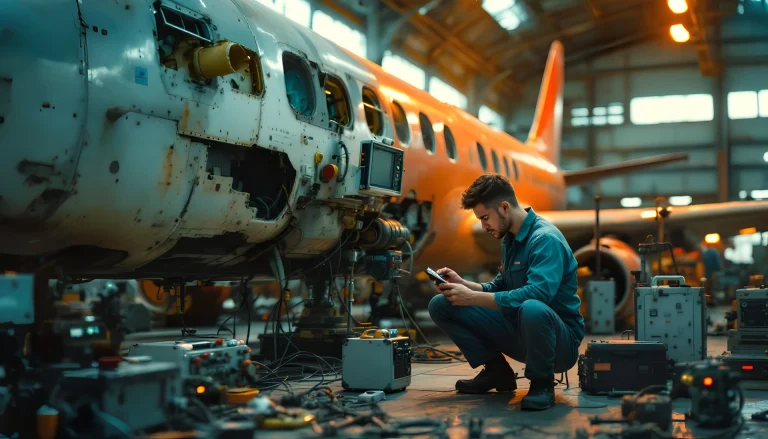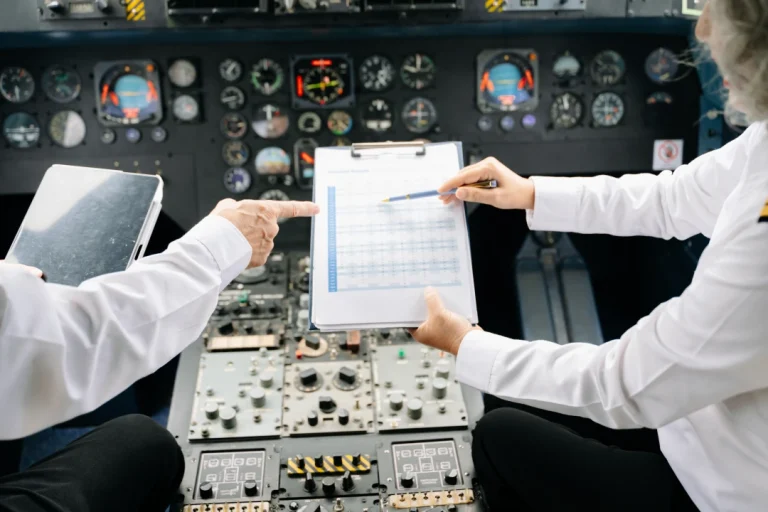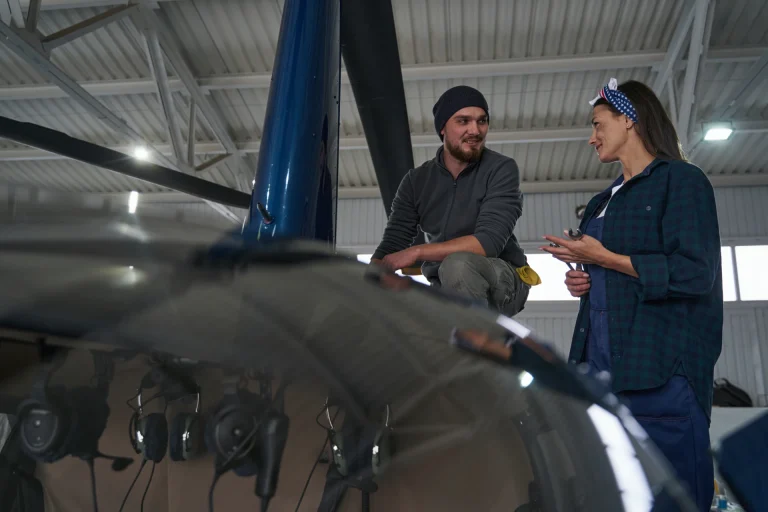The aviation industry is facing an increasing challenge: a shortage of skilled technical labor, particularly in critical roles like Aircraft Maintenance Engineers (AMEs). As airlines expand their fleets to meet growing demand, the need for qualified maintenance professionals has never been greater. This shortage is not just a concern for the industry but also an incredible opportunity for those looking to start or advance their careers in aviation. In this blog, we will explore the reasons behind this technical labor shortage and how aspiring AMEs can seize the opportunities created by this demand.
Understanding the Global Technical Labor Shortage

The global aviation sector is experiencing rapid growth, driven by an increasing number of flights, new aircraft deliveries, and a surge in air travel. However, this growth comes with its own set of challenges. According to Boeing’s Pilot and Technician Outlook, the world will need 626,000 new maintenance technicians by 2040. Similarly, the International Air Transport Association (IATA) predicts a continued rise in aviation demand, leading to an urgent need for skilled professionals to maintain safety standards across fleets.
Why Is There a Shortage?
- Aging Workforce: A large portion of the current AME workforce is approaching retirement age. As experienced technicians retire, there are not enough new professionals to fill the gap.
- Training Gaps: While the demand for aircraft maintenance is growing, there aren’t enough training institutions producing certified AMEs quickly enough to meet industry requirements. Many regions, especially in the Middle East and Asia-Pacific, are feeling this shortage acutely.
- Rising Aircraft Fleet Size: With the global aircraft fleet expected to nearly double by 2041, airlines and Maintenance, Repair, and Overhaul (MRO) facilities are scrambling to ensure they have enough skilled professionals to maintain their expanding fleets.
- Technological Advancements: New aircraft feature increasingly sophisticated technologies, such as electric propulsion and automated systems, which require specialized knowledge. The existing workforce often lacks these modern skills, creating a gap that needs to be filled by new graduates trained in these areas.
Career Opportunities for Aspiring Aircraft Maintenance Engineers

For those considering a career in aviation, the shortage of technical labor presents a wealth of opportunities. AMEs are responsible for ensuring the safety, reliability, and efficiency of aircraft, making them an essential part of the aviation ecosystem.
Why Now Is the Best Time to Become an AME:
Job Security: The shortage of skilled AMEs means that qualified professionals are in high demand globally. As an AME, you will enjoy excellent job security, particularly in high-traffic regions like the Middle East, Asia-Pacific, and North America.
Competitive Salaries: With high demand comes higher salaries. In many regions, AMEs command competitive wages, with entry-level positions offering strong starting pay. In the UAE, for example, certified AMEs can earn between AED 180,000 to AED 250,000 annually, with experienced professionals earning even more.
Global Mobility: The skills and certifications earned by AMEs are recognized internationally. Whether you train in GCAA-certified programs or elsewhere, you can work in aviation hubs around the world, from Dubai to Singapore to the United States. This global demand opens doors for exciting career opportunities.
Advancement Potential: As new technologies enter the aviation market, AMEs are required to continuously update their knowledge. Those with additional certifications, such as specialization in predictive maintenance or drone inspections, are poised for career advancement and leadership roles.
Diverse Work Environments: AMEs are employed in various sectors, including commercial airlines, private aviation, MRO facilities, and even aerospace companies. This diversity allows AMEs to explore different industries and find the best fit for their skills and career goals.
Key Areas of Growth for AMEs

The future of aircraft maintenance is evolving, with several emerging trends that present additional opportunities for aspiring AMEs.
Predictive Maintenance and Data Analytics
Advancements in predictive maintenance are reshaping how aircraft are serviced. Using data analytics and machine learning, maintenance teams can now predict potential issues before they cause problems. This reduces aircraft downtime and lowers operational costs, making AMEs skilled in predictive technologies more valuable.
Sustainable Aviation and Green Technologies
As the aviation industry prioritizes sustainability, the use of sustainable aviation fuels (SAF), green materials, and eco-friendly practices is becoming more prevalent. AMEs who understand the maintenance of these new technologies will be in high demand, especially as airlines strive to meet stringent environmental goals.
Drone Technology in Aircraft Inspections
The integration of drone technology for inspecting aircraft is speeding up routine maintenance tasks while improving safety. As drone usage in MRO operations grows, AMEs trained in operating and maintaining these systems will have a significant edge in the job market.
How to Get Started in Aircraft Maintenance Engineering

If you’re interested in taking advantage of the labor shortage in the aviation industry, now is the perfect time to begin your journey toward becoming an Aircraft Maintenance Engineer. Here’s how you can get started:
Enroll in a GCAA-Approved Course: Begin by enrolling in a certified aircraft maintenance course, such as those offered by Sarsan Aviation Academy. Our programs provide students with the knowledge and hands-on experience necessary to thrive in the aviation industry.
Obtain Industry-Recognized Certifications: In the UAE, obtaining a GCAA certification is essential for securing a job as an AME. This certification is recognized internationally, opening doors to global career opportunities.
Specialize in Emerging Technologies: To stand out in the job market, consider specializing in areas like predictive maintenance, drone technology, or green aviation technologies. These skills will be in high demand as the industry evolves.
Gain Practical Experience: Seek internships or entry-level positions with airlines or MRO facilities to gain practical experience. This will help you build a strong foundation and open up opportunities for career advancement.
Take the First Step Towards an Exciting Career
Don’t let uncertainty hold you back from pursuing a fulfilling and dynamic career. With Aircraft Maintenance Engineering, you can turn your passion for aviation into a profession that offers endless opportunities.
Conclusion
The global aviation industry is facing a critical shortage of skilled Aircraft Maintenance Engineers, creating incredible career opportunities for those entering the field. With excellent job security, competitive salaries, and the chance to work globally, now is the ideal time to pursue a career in aircraft maintenance. By enrolling in a GCAA-certified course at Sarsan Aviation Academy, you can be at the forefront of this growing industry and take advantage of the exciting opportunities that lie ahead.










